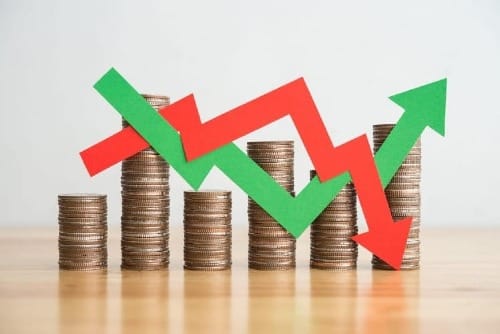

Investing in Bitcoin and stocks involves distinct risk profiles. This article highlights the difference between volatility and true investment risk, discusses Bitcoin's antifragile qualities, and examines the myriad risks associated with stocks.
Investing carries inherent risks, and both Bitcoin and stocks are not exempt from these risks. However, the nature and extent of these risks can vary greatly between different asset classes. In this article, we dissect the risk profiles of Bitcoin and stocks, focusing on the argument that Bitcoin is less risky.
Commonly, volatility is conflated with risk, but the two are not synonymous. Volatility refers to the frequency and magnitude of an asset's price fluctuations. While high volatility can indicate a higher risk of short-term losses, it does not necessarily equate to the overall investment risk.

True investment risk should be measured by the potential for permanent loss or the permanent impairment of capital. In the case of stocks, this could occur when a company goes bankrupt, making the stock worthless. In contrast, Bitcoin's risk of permanent loss has been argued to be near zero, as the decentralized nature of the Bitcoin renders it resistant to government or institutional control.
Bitcoin has been described as antifragile, meaning that it benefits from volatility, stress, and disorder. Attacks and challenges to the Bitcoin network could potentially strengthen its resilience and drive further innovation and adoption.

Stocks, representing ownership in companies, are susceptible to numerous risks:
Bitcoin markets operate 24/7, providing high liquidity and global access without the restrictions of traditional stock market hours. Bitcoin's design aims for longevity, with the potential to last for centuries without the need for transitioning between investments, thus avoiding repeated tax implications.

Bitcoin's liquidity and the ability to be traded at any time provide it with an advantage over stocks, which are bound by market hours and can be subject to trading halts during crises. Historical examples include the market closures after the 9/11 attacks and during the Great Depression.

When comparing investment returns, historical data shows that consistent investments in Bitcoin have yielded higher returns compared to the S&P 500 over a five-year period. This is evident when examining the growth of a $100 monthly investment in each asset, where Bitcoin outperformed the S&P 500 and gold by a significant margin.
While both Bitcoin and stocks carry risks, the nature of these risks differs. Bitcoin's decentralized and antifragile characteristics may present a lower risk of permanent loss compared to the various risks associated with company ownership through stocks. Historical returns also suggest a higher potential for returns with Bitcoin, albeit with higher volatility. Investors should carefully consider risk tolerance, investment goals, and diversification when choosing between these asset classes.